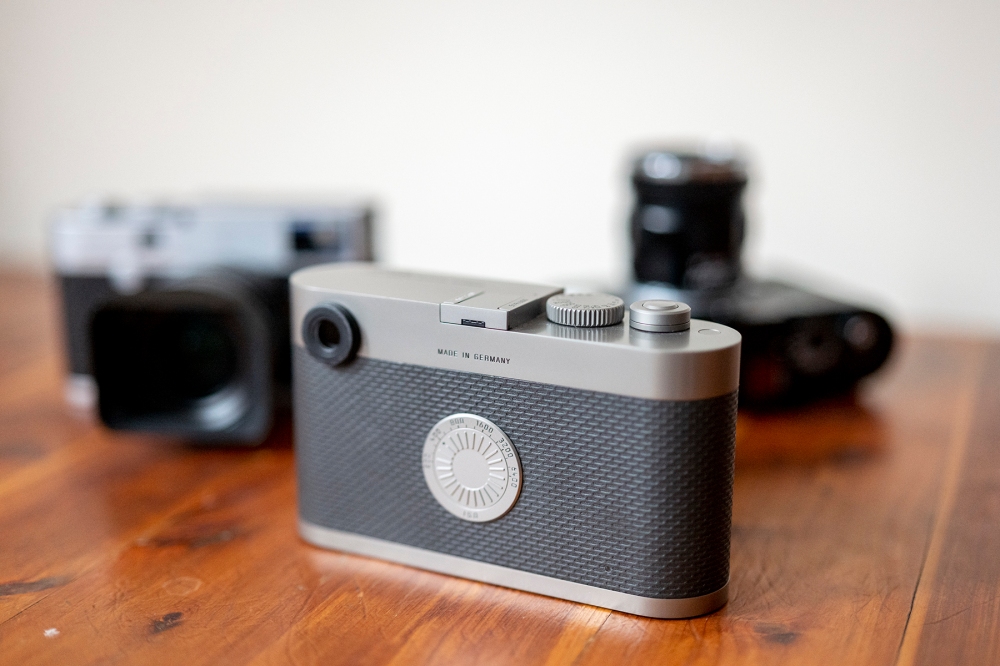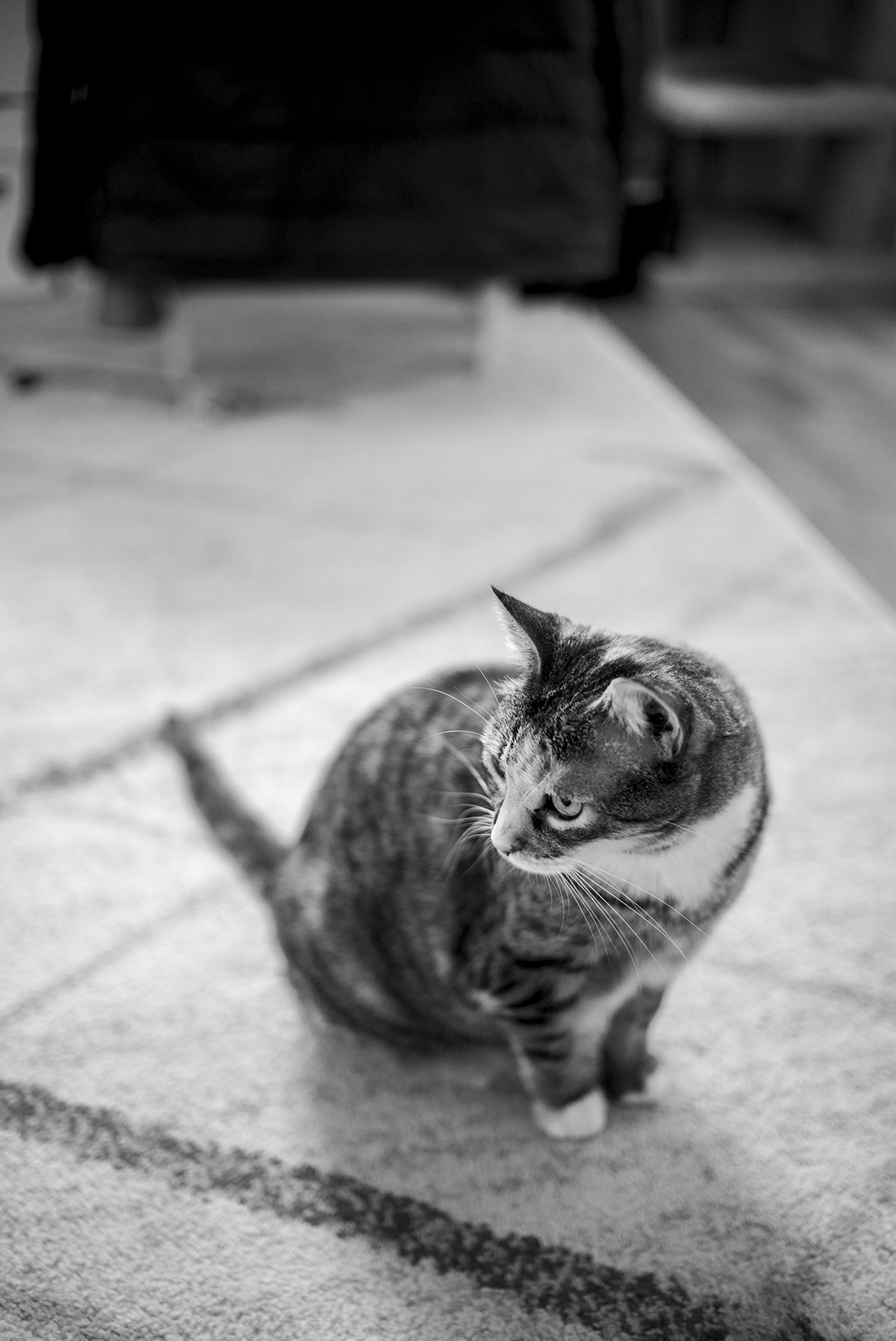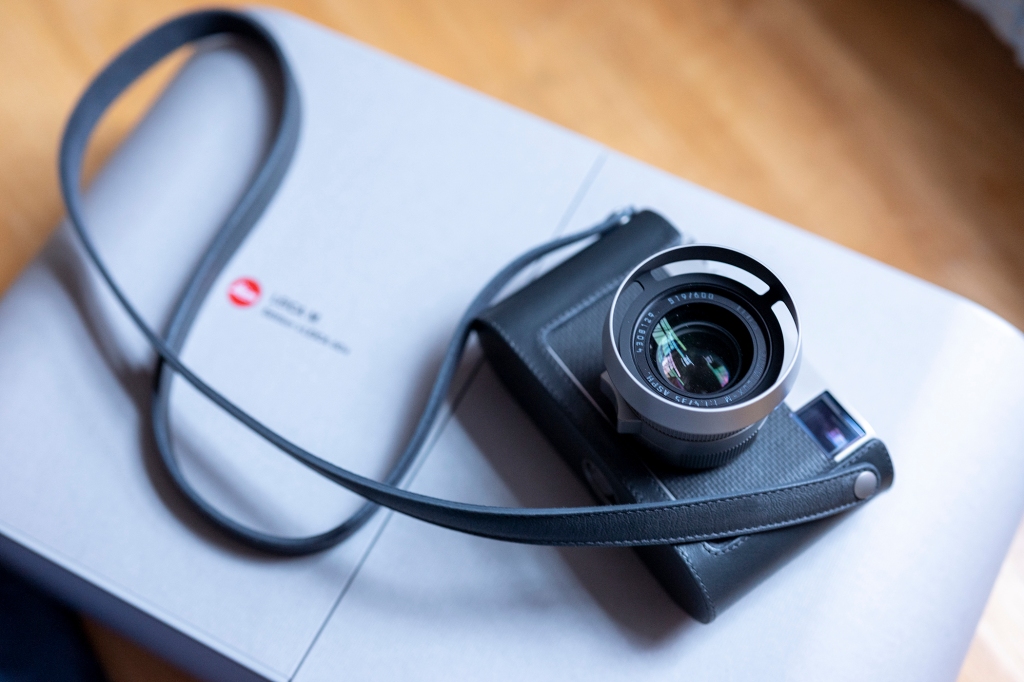Back in 2014, Leica released the M Edition 60 kit to celebrate the 60th anniversary of the legendary M system. Designed by Audi, this limited edition release was the first digital camera to do something rather revolutionary: ditch the rear LCD and strip a digital camera down to its barest essentials. The M60 was apparently all the rage at Photokina in 2014. Since then, Leica has only released two subsequent LCD-less digital M cameras: the M-D 262 and M10-D. Understandably, this unique camera design has developed a cult following of sorts amongst Leica shooters.
Even though the M60 is nearly a decade old, I decided to take the plunge and click the order button on a BNIB Leica M Edition 60 kit. A crazy and careless decision? Perhaps…
It took only a week for the package to arrive from the Netherlands, though it felt like much longer. After a bit of back-and-forth with UPS’s customs office, I picked up the package and felt like a kid on Christmas. With the exception of my very first digital DSLR purchase (a Canon 30D & 70-200 f/4 L), I don’t think I’ve been this excited about a piece of photography equipment.
While researching the M60, it was difficult to find any actual user reviews online. Sure, there are a decent number of “reviews” which wax poetic about the M60, but I couldn’t really find any detailed info from actual day-to-day users. While this makes sense since I suspect a lot of buyers keep the M60 in storage as a collectible (it is a limited release, after all), it’s unfortunate because this really is a cool camera. With that in mind, I wanted to share some thoughts with the photography community after using this beautiful camera for a couple of months.

The M60 in 2023 – Why?
An LCD-less Leica has been on my wishlist for quite a while, but I had a difficult time convincing myself I “needed” such a camera (let alone afford one). It seemed frivolous and unnecessary, not something I could use as an everyday shooter or justify as a backup camera.
So, why purchase the M60 almost a decade after its release? Common sense would seem to dictate that it’s questionable to purchase a digital camera that is several generations old, which lacks a screen, at a price in the neighborhood of a used car. I’ll do my best to unpack this particular decision.

First, let me explain how I settled upon the M60 instead of an M-D 262 or Leica M10-D. It really was a process of elimination. While the M10-D is the newest M-D model offered by Leica, I consider it to be the least attractive choice. For starters, the fake film advance lever is a rather silly design feature. Really, come on Leica. Additionally, I didn’t like that the ISO wheel on the back had been replaced with an exposure compensation wheel, and ISO selection was moved to the top of the camera body. Plus the price was a bit too steep, assuming I could find a copy in decent shape. The M10-D simply wasn’t in the cards for me.
So, what about the M-D 262? Other than the finish and strap lugs, the M60 and M-D 262 are almost the same camera. Truthfully, the M-D 262 was my initial choice, however, the real challenge proved to be actually finding one. I kept my eyes open for several months, but only a handful of bodies became available on eBay and elsewhere. In January, I was flabbergasted when an M-D 262 showed up on eBay in rough shape, with no packaging, and sold for a staggering 5k. With that, I started to look at the M60 more closely.

To my surprise, there were about six M60 kits available for purchase on eBay and international marketplaces. Most were out of my price range (I was already out my depth honestly). However, I was able to find an essentially brand new M60 kit for more than half what it retailed brand new back in 2014. Put differently, I would actually be spending more if I purchased a secondhand M-D 262 and 35mm Summilux ASPH FLE in similar condition. In terms of economics, it made more sense to go the M60 kit route. Plus, if I’m lucky, it might even hold its value in the coming years due to it being a limited edition complete kit (at least that’s what I’m telling myself).
What about the technology aspect? Would the M60 sensor and overall technology still “work” in 2023? This question honestly makes no sense to me, but for the sake of this write-up I’m going along for the ride since it is common in the photographic community to question the worthiness of a digital camera after several years as newer models are released. I truthfully never understood this question and grimace whenever I see it online. To be blunt, any camera released 5, 10 or even 15 years ago will work fine today and also in the future. There are countless users who still love their M8, M9, 240, 246 etc etc. The M60 (240) sensor and technology is just as good today as it was back in 2014. Sure, newer sensors might have more megapixels or better dynamic range, but such things are not necessary to take a photograph in 2023. It is my opinion that, for all practical purposes, most camera sensors released within the past decade have reached a level where any capable photographer will do just fine. Also, let’s not forget film users spend a pretty penny on 70 year-old M3 bodies. Not only that, I can guarantee that most iconic images captured with a Leica were in fact shot with film, likely many decades ago. New technology is admittedly exciting and a necessary evil for camera companies to stay in business, but that’s about it; the newest technology isn’t needed to practice photography.
Limited Features & No Screen – A Moment of Zen?
The more pressing question: why even purchase an M60 (or M-D 262/M10-D) in the first place? Why spend more on a camera that has markedly fewer features and no LCD screen?

No matter how many features and megapixels are crammed into a camera, the basic building blocks behind photography hasn’t changed since the craft was invented generations ago. All that is needed to create a photograph is the exposure triangle (shutter speed, aperture, and ISO speed), a lens, and a medium for the light to be captured. That’s it. Sony, Fuji, Canon, Nikon (and even Leica) would have you think you need more than that, but that’s not true. The only variable beyond those basic building blocks is who is behind the camera. The Leica M60 gives photographers only what they need to take a photograph. Everything else is up to the photographer.
It’s difficult to put into words, really. There is something desperately missing in today’s photography. Thanks to our smartphones and the abundance of consumer-grade cameras, photography is more accessible to the public than ever before (in my opinion, at least). My first digital camera, a Canon 30D, is a dinosaur relic that can’t come close to the sensor quality found in my smartphone. Likewise, today’s consumer-level interchangeable cameras are of a different world compared to the 30D. Even with such improvements in technology, the mindset of today’s photography marketplace is missing something. Maybe even society at large.
Rather than catering to the thoughtful artist who patiently takes the time to understand their craft, today’s marketplace caters to a “shoot first, ask questions later” and “spray and pray” mentality of photography with the aim of cramming more features and megapixels into the latest generation of camera models. I feel like the myriad of features and do-dads crammed into modern cameras confuses new photographers instead of allowing them to master the fundamentals of photography. Put simply, the basic building blocks of photography has taken a backseat while technology and affordability has creeped to the forefront. I know that might come off as a bit of hyperbole but compare the specs of today’s consumer/prosumer cameras to those 15 or 20 years ago. Specifically, note the increased size of LCD screens that are touch-sensitive, decreased build quality, inclusion of video on pretty much all digital cameras, lack of dedicated & intuitive shutter/aperture/ISO dials, unrealistic FPS rates, and the number of automatic features. Heck, even look at Photoshop releases over the years and the incorporation of AI tools.
Perhaps I just sound like an old man ignoring new tools of the trade, but in my opinion the sum of such “improvements” equals a decreased knowledge and understanding of photography as a skill.
Anyway, why purchase an LCD-less camera such as the M60? I think Leica said it best when they announced the camera in 2014: “With this concept, Leica is once again the synonym for an art in which technology plays a role subordinate to the essentially creative aspects of photography.”
35mm f/1.4 Summilux ASPH FLE M60 – A Stainless Steel Marvel
The 35mm lens included with the M60 kit is a stainless steel version of the 35mm f/1.4 Summilux ASPH FLE design praised by countless Leica users. The 35mm FLE is perhaps one of Leica’s most popular lenses and a great choice to be paired with the M60 body. I won’t go into a lot of detail regarding the image quality of the lens. The 35mm FLE is a phenomenal lens, and there are countless reviews out there regarding the standard version of this lens.
With that said, it is a beautifully crafted variation of the 35mm FLE. The stainless steel finish results in a truly unique Leica lens, the aperture ring feels very precise, and the lens shade is gorgeous. The lens is a little bit heavier than the standard FLE, which isn’t a problem realistically. However, when mounted on a lighter standard M body, such as an M262 or M10, it does feel slightly unbalanced. Conversely, when mounted on the M60 it balances perfectly. Truthfully, the 35mm “Steel-lux” and M60 body belong together, and one cannot truly appreciate either until they are paired together.

Color and Finish – One Of A Kind
Like any limited edition Leica kit, the color and finish of the M60 is unique. The stainless steel isn’t silver like your average stainless steel toaster, nor is it silver like Leica’s standard chrome finish. Rather, it’s a somewhat warmer stainless steel finish. The leatherette is also more of a matte finish compared to the deep black leatherette on standard Leica bodies. It all looks very beautiful and impressive, mind you, but it is something worth mentioning.



How does the color and finish of the M60 kit look when paired with standard Leica equipment? I’ll be the first to admit the absurdity behind such a question, but I don’t think I’m the only Leica user out there who wonders about such things.
All in all, the colors look pretty good when paired with standard Leica gear. Again, this is a matter of personal preference. If anything, black lenses look a little “off” when mounted on the M60 body; the M60 35mm ‘Lux looks pretty good on black bodies.
Shutter Sound – Is It Quiet Enough?
While researching the M60, one of the topics I saw discussed on various forums was the shutter sound. I owned a M-P 240 for several years and was well aware of the shutter sound. Supposedly the M60 would sound the same since it’s the same body style. I was hesitant to pull the trigger on the M60 because of this. One of the reasons I switched from the M-P 240 to the M10-P was the shutter sound. The M10-P is a stealthy machine and allows me to shoot closer and with wide-angle lenses since I am more comfortable taking candid street photos closer to my subject. The M10-P and a wide-angle lens is a lovely street combo.
Anyway, I digress… I was concerned about using the M60 as a street camera because of the shutter sound. As is the case with anything online, some folks said the M60 was quieter than the M-P 240, some said it was the same, while others said it was louder. Opinions were all over the place.
Likely due to the stainless steel material, the M60 has a somewhat slicing metallic sound. By comparison, the M262 has a hollower clunk sound; the M10-P is practically silent by comparison. The sound of the M60 is certainly unique, but realistically the volume level is about the same as the M-P 240 or M262. Because of this, the M60 isn’t my first choice as a street camera, but that doesn’t mean I don’t enjoy using it as a street camera.
Here are a couple of videos highlighting the M60 shutter sound. For comparison purposes, I’ve included the M262, M10-P, and M3 as well in these videos.
Video 1 (With lenses)
Video 2 (With and without lenses)
Who Needs Strap Lugs?
Forget about the omission of an LCD screen. Perhaps the most provocative and bold decision by Leica/Audi was to create a limited edition camera body with no strap lugs. Say what?! Call me crazy, but I think if this camera had strap lugs it would be more popular in the secondary market. I certainly had reservations about purchasing the M60 kit due to this design decision, and this topic is nearly always brought up by reviewers and commentators of the M60.

So, without strap lugs, what’s one to do? The most obvious choice is to use the beautifully crafted case that comes with the M60. It has straps. Before continuing, let me say the case is gorgeously crafted. The leather material feels extremely durable and rigid, and the camera fits like a glove. Like everything else with the M60 kit, the case’s minimal design works tremendously well and feels like an extension of the camera itself. There is one big problem, however… the straps suck.
The straps on the supplied case are very short. I’m 6’1″, so maybe it works better for folks who are shorter. Either way, I honestly find the straps annoying. I prefer to have my camera slung cross-body, and when doing so with the M60 case that means the camera is basically nestled in my armpit. When slung around my neck – ala tourist mode – it is still too short for my liking since it is basically front-and-center when I’m out and about. Another first world problem, I know, but this is the biggest downfall of an otherwise perfect limited edition kit. Honestly, I would use the M60 more if the case didn’t suck so much. Truly a first world tragedy.
To overcome the lack of strap lugs and a frustrating case design, what is one to do? Unfortunately options are sparse. There is the option to just handhold it, but that’s not even close to realistic when actually shooting in the real world. Currently the only third-party case & strap combo made for the M60 is an Italian imported model, which would be fine, but I don’t care for the aesthetics of that particular case. There are other options: a tripod mount strap adapter, modifying the original case’s straps or seeking out a custom case. I haven’t explored these options as of yet, therefore begrudgingly put up with the supplied case.

Conclusion
Has the M60 made me a better photographer? Definitely not. However, when shooting with the M60 I noticed I approach photography differently (compared to, say, my M10-P or SL). I’m a bit more thoughtful about composition, spending a few more seconds paying attention to what is inside and outside the framelines. It forces me to think about photography similar to when I was just a boy shooting film. When shooting with my M10-P (which has an LCD screen), I take so many shots of any given scene or subject because subconsciously I “chimp” the hell out what I’m chasing in that moment. I’m no longer in the moment as a photographer and observer of reality. The M60 alleviates this problem in a way that’s difficult to put into words.
Shooting without a screen also just feels right with a Leica. Another seemingly high-brow statement, I realize, but hear me out. The Leica M system is different to begin with, especially when compared to the usual big names out there. Leica’s “less is more” philosophy is apparent on all of their bodies; even when they add more (i.e M240 and M11), the additional features still result in a minimal camera compared to Sony, Fuji, Nikon and Canon. There is no auto-focus, the standard “PASM” metering modes are gone, the viewfinder isn’t an EVF nor does it display a WYSIWYG image. Shooting – and seeing the world – with a Leica is different. The simple act of removing the screen and features feels, well, right.
With all that said, I will step down from my soapbox and offer some critical thoughts of the M60. Is it for everyone? Of course not. It’s an expensive niche product. The M60 simply doesn’t resonate with the majority of consumer-level photographers out there (to be fair, this is not the target audience anyway). It’s not even an ideal professional kit for many users. Though I’ve used it in a few professional situations, it wasn’t the only camera in my bag. Conversely, Leica users who would love to shoot with an LCD-less camera might have a difficult time paying the price of admission. Images are captured as DNG raw files, which also presents a learning curve for folks who shoot only JPG. Additionally, the case & strap design is honestly very frustrating. Finally, the shutter sounds like an explosion compared to an M10-P/R or M11.
Still, I wish other big name camera manufacturers would take note that photography isn’t about how many features and megapixels can be crammed into a camera, nor should their approach to product design be akin to the bloatware that plagued computers in the 1990’s. Just imagine if Sony or Fuji experimented with their own variations of an LCD-less camera with fewer unnecessary features, while at the same focusing on a quality product that feels good to hold. Nikon has taken a step in the right direction with the Zf, but their lens lineup doesn’t match the vision of such a camera.
Anyway, I wholeheartedly recommend this kit to anyone looking for an LCD-less Leica camera. I’m not sure if the price will creep up over the years as BNIB kits become harder to find, but for the moment it’s an attractive alternative for those considering the M-D 262 or M10-D. It’s still a timeless camera in 2023.
Image Samples
(Leica M Edition 60 & 35mm f/1.4 Summilux ASPH FLE M60)















Quick Disclaimer: Making these reviews/write-ups is a hobby, and my attempt of contributing something useful to the photographic community. All costs of securing the equipment I discuss comes out of my pocket. If you found this review/write-up useful, please consider making a donation via Buy Me a Coffee. As always, thank you for visiting and don’t forget to turn off your computer or smartphone and take some photos!

